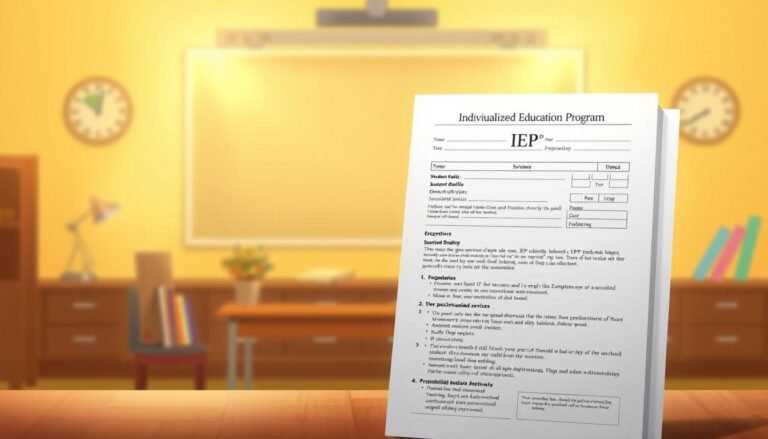
Navigating the Challenges: An Essential Guide to Supporting Dyslexic Students in the Classroom
Introduction
Imagine stepping into a classroom where the bright eyes of eager learners are met with a daunting wall of letters and numbers that refuse to behave. For dyslexic students, this is often the stark reality. Dyslexia—an often misunderstood learning difference—affects a significant portion of the student population, making reading, writing, and even sometimes speaking a frustrating challenge. As educators, parents, and peers, understanding how to support these students can be transformative, not just for their academic performance but for their confidence and self-esteem as well.
In this comprehensive guide, Navigating the Challenges: A Guide to Supporting Dyslexic Students in the Classroom, we will explore the nuances of dyslexia, examine practical strategies that can be implemented in educational settings, and highlight real-world case studies that illuminate effective practices. With the right knowledge and tools, educators can foster an inclusive environment where every student, including those with dyslexia, can thrive academically and socially.
Understanding Dyslexia: Beyond the Myths
What is Dyslexia?
Dyslexia is a specific learning disability that is neurological in origin. It is characterized by difficulties with accurate and/or fluent word recognition and by poor spelling and decoding abilities. This can lead to challenges in reading comprehension, affecting a student’s performance across all subjects.
Common Signs of Dyslexia
- Trouble learning the names of letters or numbers
- Difficulty breaking words into their component sounds
- Problems sounding out unfamiliar words
- Inconsistent spelling abilities
Debunking Common Myths
Myth: Dyslexia is a sign of low intelligence.
Fact: Dyslexia affects individuals of all intelligence levels.
Myth: Children will outgrow dyslexia.
Fact: While many develop coping mechanisms, dyslexia is a lifelong condition.
- Myth: Dyslexia is just a reading problem.
Fact: Dyslexia impacts a range of skills including writing, math, and social skills.
Recognizing the Challenges
Dyslexic students face unique obstacles in traditional educational environments. These challenges can manifest in various ways, including:
- Academic Frustration: Difficulty with reading and writing can cause a lack of interest in schoolwork.
- Self-Esteem Issues: Continuous academic struggles may lead to feelings of inadequacy.
- Behavioral Problems: Frustration may result in acting out or withdrawing from participation.
Navigating the Challenges: Strategies for Educators
Supporting dyslexic students involves implementing strategies tailored to their unique learning needs. Here, we outline several effective approaches:
Multi-Sensory Instruction
Multi-sensory teaching approaches engage visual, auditory, and kinesthetic learning styles, which can be particularly beneficial for dyslexic students. Some strategies include:
- Phonics Games: Use visual aids and physical activities to help students learn letter sounds.
- Interactive Writing: Encourage students to write using different materials (e.g., sand, clay) to reinforce learning.
Structured Literacy Programs
Programs designed specifically for individuals with dyslexia include:
- Orton-Gillingham Approach: A direct and multisensory method for teaching reading.
- Wilson Reading System: Focuses on word structure and is ideal for students requiring more intensive support.
Classroom Accommodations
Creating an inclusive environment can significantly impact dyslexic students’ success:
- Extended Time on Tests: Allow more time for students to complete assessments.
- Use of Technology: Tools such as speech-to-text software can aid in writing tasks.
Encouraging a Growth Mindset
Fostering a growth mindset in students will help them view challenges as opportunities for growth:
- Praise Effort, Not Just Achievement: Acknowledge hard work to build resilience.
- Set Realistic Goals: Help students set and track progress toward attainable targets.
Regular Communication with Parents
Partnerships between teachers and parents are vital for the support of dyslexic students. Regular updates about progress, strategies being employed at school, and areas for further development create a collaborative support system.
Real-World Applications: Case Studies
Case Study 1: Emily’s Story
Background: Emily, a fifth grader diagnosed with dyslexia, struggled with reading comprehension and often felt discouraged during academic tasks.
Strategy Implemented: Her teacher employed multi-sensory instruction methods, integrating visual aids and interactive activities.
Outcome: By actively engaging with the material through multi-sensory methods, Emily’s confidence grew, and her reading comprehension scores improved significantly by the end of the school year.
Analysis: Emily’s case illustrates the effectiveness of personalized, engaging instruction in boosting both academic performance and self-esteem in dyslexic students.
Case Study 2: Jacob’s Journey
Background: Jacob, a seventh grader with dyslexia, found himself overwhelmed in traditional class settings. He often avoided reading aloud, fearing judgment from classmates.
Strategy Implemented: Jacob was placed in a structured literacy program and benefited from the use of assistive technology.
Outcome: By integrating structured interventions and technology, Jacob’s reading fluency improved by nearly two grade levels, encouraging him to actively participate in class discussions.
Analysis: Jacob’s story exemplifies the importance of adaptive learning strategies and the impact technology can have on learning outcomes for students with dyslexia.
Data Insights: The Importance of Early Intervention
A growing body of research suggests that early identification and intervention for dyslexia can lead to significant improvements in academic performance.
| Research Study | Findings |
|---|---|
| National Center for Learning Disabilities | 75% of students who receive early intervention show improved reading skills. |
| Yale University | Early intervention reduces the need for special education services by over 50%. |
The data underscores that Navigating the Challenges: A Guide to Supporting Dyslexic Students in the Classroom begins with early recognition and responsive educational practices.
Creating an Inclusive Classroom Environment
Classroom Design
- Flexible Seating Arrangements: Allow students to choose where and how they learn best.
- Calm Learning Spaces: Create designated areas for focused work to minimize distractions.
Peer Support Programs
Encouraging collaboration among students can foster a supportive environment. Implement peer tutoring sessions where students with strengths in reading support their dyslexic peers.
Professional Development
Ongoing training for teachers on dyslexia and related instructional strategies is crucial for creating an informed educational community. Schools can facilitate workshops and invite specialists to share expertise.
Conclusion
Navigating the challenges of supporting dyslexic students in the classroom requires a multifaceted approach that includes understanding their individual needs, employing effective strategies, and fostering a supportive environment. As educators, we hold the power to change the narrative for these students—transforming frustration into empowerment, and struggle into success.
By implementing the tools and strategies outlined in Navigating the Challenges: A Guide to Supporting Dyslexic Students in the Classroom, we can create a culture of acceptance and understanding that transcends the classroom. It begins with awareness and culminates in actionable strategies that can, quite literally, change lives.
FAQs
1. What is the best way to identify if a student has dyslexia?
Early signs include difficulties with letter recognition, problems with sounding out words, and challenges with spelling.
2. How can I best support a dyslexic student in my classroom?
Implement multi-sensory teaching techniques, provide accommodations like extra time, and foster an inclusive classroom environment.
3. Are there any specific teaching programs for dyslexic students?
Yes, programs such as the Orton-Gillingham approach and the Wilson Reading System are specifically designed to support dyslexic learners.
4. Can dyslexia be outgrown?
Dyslexia is a lifelong condition, but many individuals develop effective coping strategies over time.
5. How important is parental involvement in supporting my dyslexic student?
Parental involvement is crucial for reinforcing strategies at home and ensuring consistency in interventions.
6. What role does technology play in supporting dyslexic students?
Technology can provide valuable tools such as text-to-speech software, which helps students overcome challenges in reading and writing.
Final Encouragement
As we navigate the challenges presented by dyslexia, let us remember: every student has the potential to succeed. With understanding and support, we can create an educational landscape where all learners, regardless of their challenges, can thrive academically and beyond.
















